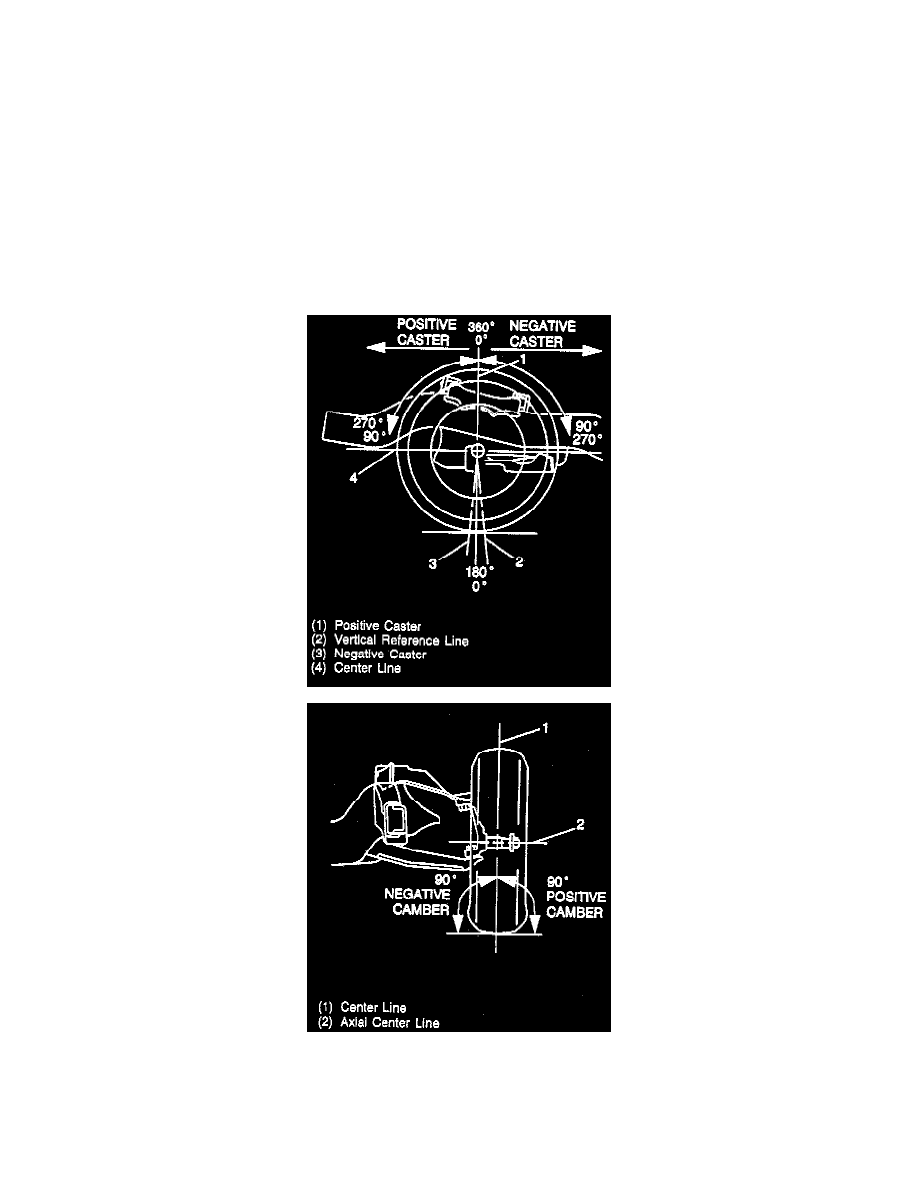G 1500 1/2 Ton Van V6-4.3L VIN W (1997)

Alignment: Service and Repair
Front Wheel Alignment
Front Caster and Camber Adjustment
All caster specifications are given with a frame angle at zero. Therefore, it is necessary to know the angle of the frame whether "UP IN REAR" or
"DOWN IN REAR" before a corrected caster reading can be determined. Camber and the toe angle can be read "as is" from the alignment equipment.
1. Position the vehicle on a smooth and level surface.
2. Use a bubble protractor or inclinometer to measure the frame angle. Frame angle is the degree of tilt in the frame from the level position.
3. Determine whether the frame angle is level, "UP IN REAR" or "DOWN IN REAR."
4. To determine an actual (corrected) caster reading with various frame angles and caster readings, one of the following rules apply:
-
A "DOWN IN REAR" frame angle must be SUBTRACTED from a POSITIVE caster reading.
-
An "UP IN REAR" frame angle must be ADDED to a POSITIVE caster reading.
-
A "DOWN IN REAR" frame angle must be ADDED to a NEGATIVE caster reading.
-
An "UP IN REAR" frame angle must be SUBTRACTED from a NEGATIVE caster reading.
5. Determine the caster and camber angle.
6. If the caster and camber angle is not within specifications, remove the frame bracket knockouts. Refer to "Frame Bracket Knockout Removal."
